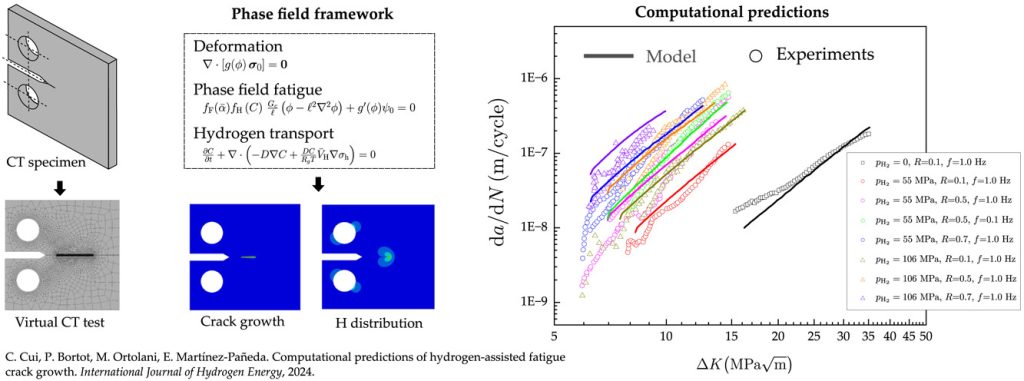Computational predictions of hydrogen-assisted fatigue crack growth

A new model is presented to predict hydrogen-assisted fatigue. The model combines a phase field description of fracture and fatigue, stress-assisted hydrogen diffusion, and a toughness degradation formulation with cyclic and hydrogen contributions. Hydrogen-assisted fatigue crack growth predictions exhibit an excellent agreement with experiments over all the scenarios considered, spanning multiple load ratios, H2 pressures and loading frequencies. These are obtained without any calibration with hydrogen-assisted fatigue data, taking as input only mechanical and hydrogen transport material properties, the material’s fatigue characteristics (from a single test in air), and the sensitivity of fracture toughness to hydrogen content. Furthermore, the model is used to determine: (i) what are suitable test loading frequencies to obtain conservative data, and (ii) the underestimation made when not pre-charging samples. The model can handle both laboratory specimens and large-scale engineering components, enabling the Virtual Testing paradigm in infrastructure exposed to hydrogen environments and cyclic loading.
Authors: Chuanjie Cui, Paolo Bortot, Matteo Ortolani, Emilio Martínez-Pañeda
https://www.sciencedirect.com/science/article/pii/S037877532400346X
